

Reaching a deep, super-pleasurable, highly beneficial state of meditation is easy with EquiSync's advanced brainwave technology. Just a few of meditation’s limitless benefits:
→ Transcend the effects of stressBacked by extensively researched, deeply featured, multilayered brainwave entrainment technology, EquiSync's powerful audio tracks are designed to help you unlock the limitless power of your brain & mind, creating the perfect mental, emotional, and physical environment to realize your highest potential.
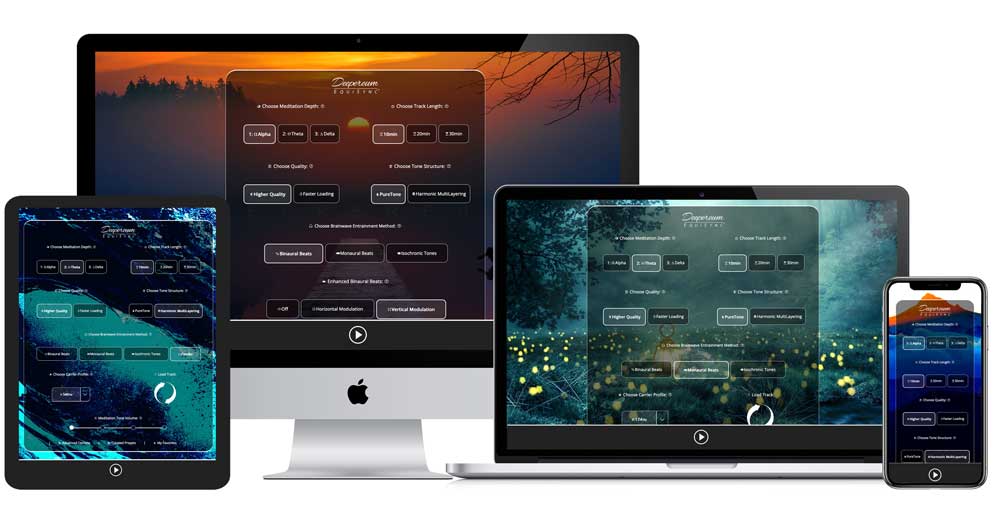
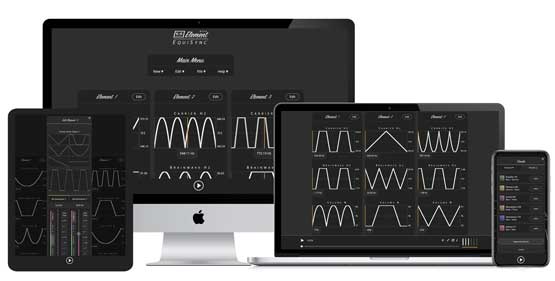
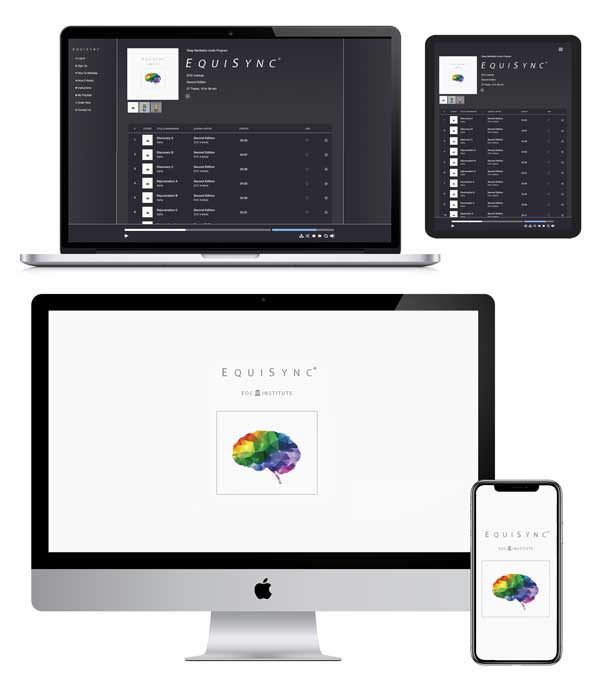



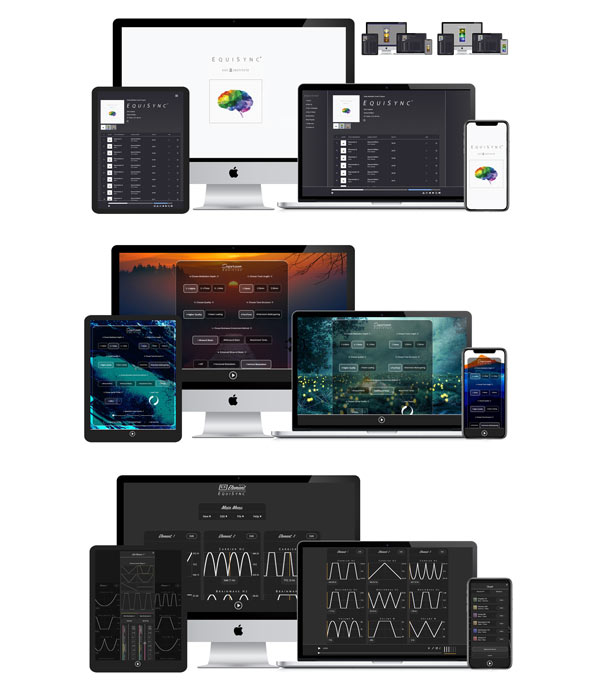






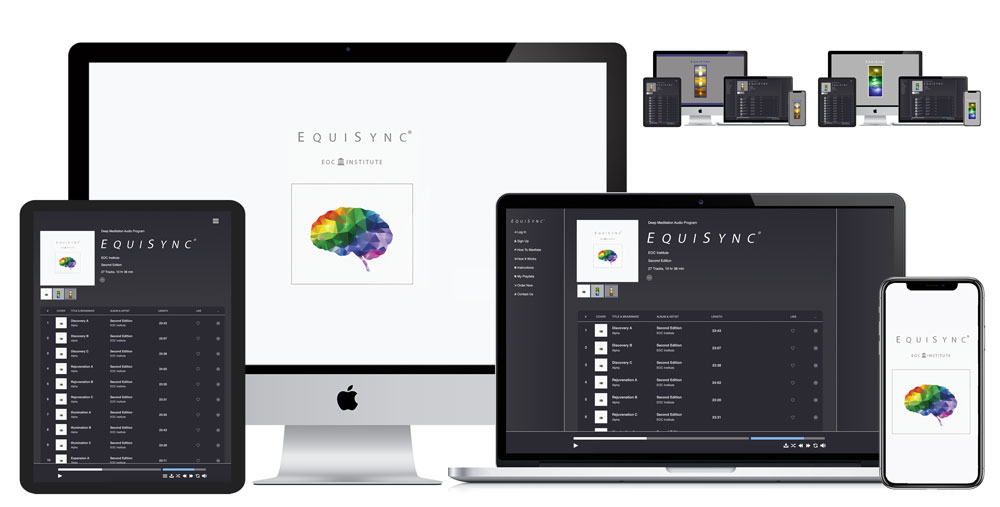











EquiSync: Constant Innovation. With 1000's of brainwave synchronization studies on the books and more published by the week — EquiSync's carefully engineered, highly precise design is always incorporating the latest & greatest scientific breakthroughs.
Our Unique Approach. Though certainly not the only way, binaural beats are perhaps the most well-known way of deepening the meditative state. While they work best with certain "enhancement" techniques, EquiSync's design does indeed include binaural beats — yet in a highly unique and super powerful way. You can learn the basics of binaural beats below:
First Discovery. First discovered by Austrian physicist Heinrich Wilhelm Dove in the mid 20th century, the last two decades have seen an amazing amount of scientific interest in therapeutic binaural audio technology — with more than 3,000 studies conducted to date.
Gaining significant ground within the scientific community. Today, this simple yet highly effective technology is used to create an unending list of positive mental states: meditation, relaxation, sleep, focus, creativity, and more. With a massive "positive benefit" upside, a growing number of researchers, doctors, scientists, and other professionals have implemented this powerful therapeutic tool in their private practices & daily lives.
How Do Binaural Beats Work? Put simply, when two precise, yet distinct sounds are introduced, one to each ear — the brain responds by producing low-frequency vibrations. The brainwave patterns then passively mimic the difference between the two tones, with the user's state of consciousness following in-step.

Example. If 200 Hz is played in your right ear, and 190 Hz in your left ear, the difference between these tones (10 Hz) will be experienced as a very relaxing alpha wave. After a few minutes, your state of consciousness will mirror this particular 10 Hz brainwave, entraining your neural rhythms via what scientists call "Frequency-Following-Response (FFR)". The countless positive mental, emotional, and physical benefits of the alpha state then become instantly available to you — opening the door to profound results.
Advanced Binaural Beats. Many binaural beat users find that, assuming maximum binaural beat integrity is maintained (very important!), a far deeper meditative state can be achieved through certain upgrades to the audio. For this reason, EquiSync Deepereum & EquiSync Element both include two enhanced binaural beat options:
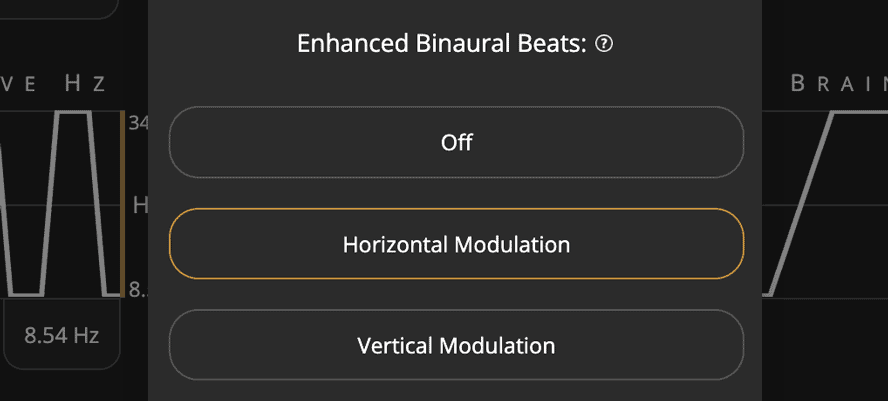
Vertical Modulation: With this feature implemented, the waveform will resemble more of a monaural beat than a binaural beat. However, unlike a monaural beat, the left & right audio channels maintain their frequency (Hz) difference (meaning that it still works like a binaural beat). Many users find this modification to be extra-effective (versus standard binaurals), and therefore, very helpful for deep meditation.
Horizontal Modulation: Instead of a static left / right volume (as with standard binaurals), the horizontal modulation feature rhythmically oscillates the volume from side to side, ear to ear (like a bilateral beat). Assuming that maximum audio quality & left-right channel separation is maintained (as done with our program, this is very important!), many users find this feature to be a powerful upgrade over standard binaural beats. Like its vertically modulated counterpart, horizontally modulated binaurals are super effective for deepening the meditative state.
Whether it's standard or enhanced binaural beats, you are encouraged to find what works best for you!
Note: We encourage you to learn about EquiSync's powerful and unique sound technology (where binaural beats are but one basic aspect!) in the next sections.

Popular & Prominent. Known for their powerful "vibrating" quality, Isochronic Tones are a highly popular & effective form of brainwave entrainment that, when present on a particular track — are unmistakable.
How Do They Work? On the most basic level, an isochronic tone is simply an audio signal that is turned on and off quickly. The resulting "pulse" effect can be extremely effective when used for therapeutic purposes.
Great Precision. When implemented in a precise way, including when combined with certain entrainment techniques & the "best" carrier frequencies (as done with EquiSync!) — isochronic tones can be an incredibly valuable tool for creating a consistently deep, highly beneficial state of meditation.
Basic Structure. You can see the basic structure of these sound waves in the image below:


"SynchroWave Modulation" is a key feature on a select number of tracks — particularly EquiSync Classic's "Second Edition" as well as EquiSync Deepereum's "VibraSphere" tracks.
How Does It Work? Put simply, rather than the background audio layer (i.e. the nature soundscape or ambient music) serving the purpose of "masking" the brainwave synchronization tones (which newer users of the technology typically prefer) — the revolutionary SynchroWave Modulation feature transforms the whole waveform into a fully active entrainment layer (standing on its own).Volume Modulation. By "modulating" the soundscape audio layer's volume, up and down, with great precision — SynchroWave Modulation makes the whole waveform look and work like that of a monaural beat / isochronic tone (see image below).
All Sound Layers In-Sync. From the bench to the field, this powerful feature gets the background audio back into the game. With 100% of the sound working to deepen the meditative state — the door opens to an incredible world of benefits!
The image below shows a typical soundscape audio's waveform before and after implementing this powerful feature:


When Mozart sat down to compose his legendary symphonies his job was to orchestrate all of the many notes, chords, & rhythms available to him in his own masterful, unique way.
Likewise, when creating sound to deepen the meditative state, it's a precise orchestration of many variables: brainwave frequency, carrier frequency, entrainment technique, entrainment pattern, soundscape type, volume levels, resonance, and more.
Blending art & science, "Synergistic MultiLayering" is our unique method of combining all of these variables into one highly effective piece of sound.
While Mozart would hand write his genius compositions onto sheet music, Synergistic MultiLayering is best represented on our most advanced program: EquiSync Element.
Note: While EquiSync Classic, Deepereum, & Element all implement multilayering as described above, the screenshots below are taken from the best illustrator of the concept — EquiSync Element.
The real magic of Synergistic MultiLayering is in how the layers all work together rather than the attributes of any one layer.Synergistic MultiLayering Example: The charts below show a single audio track with 3 entrainment layers (labeled as "Elements") which create a super powerful effect when played at the same time.
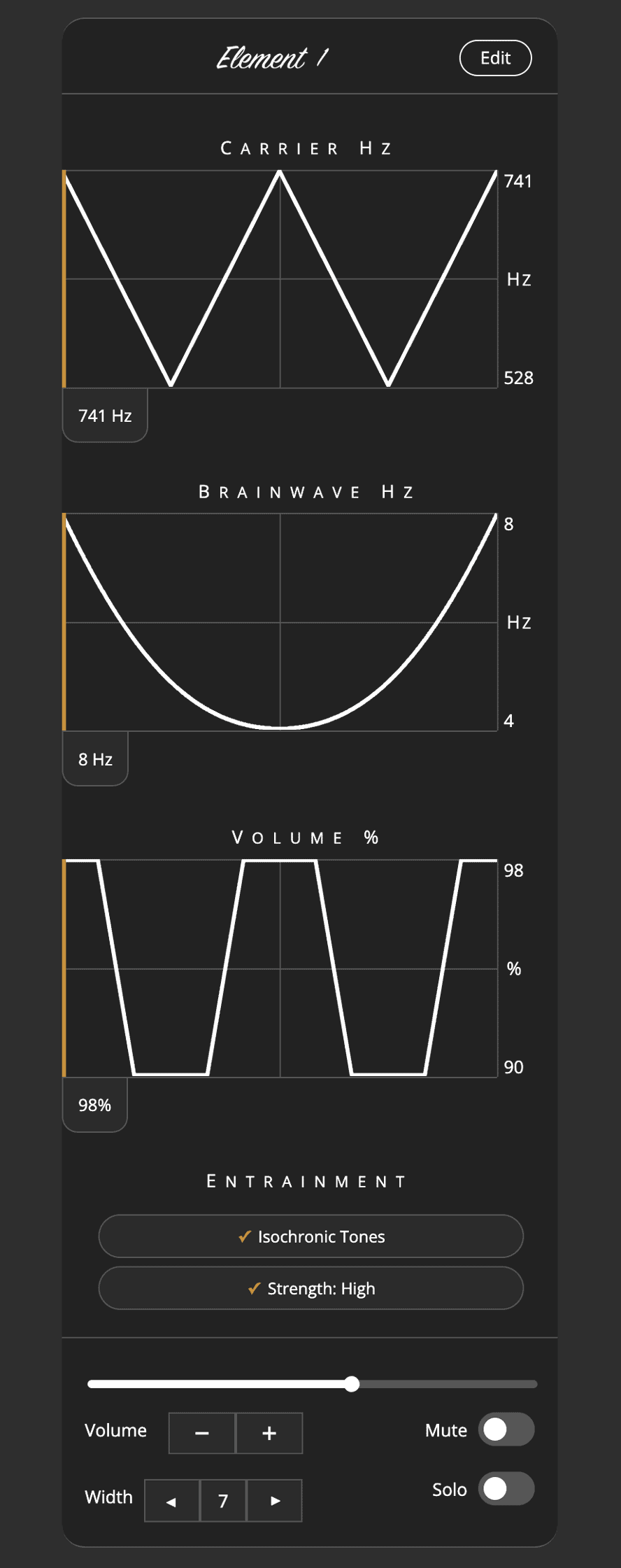
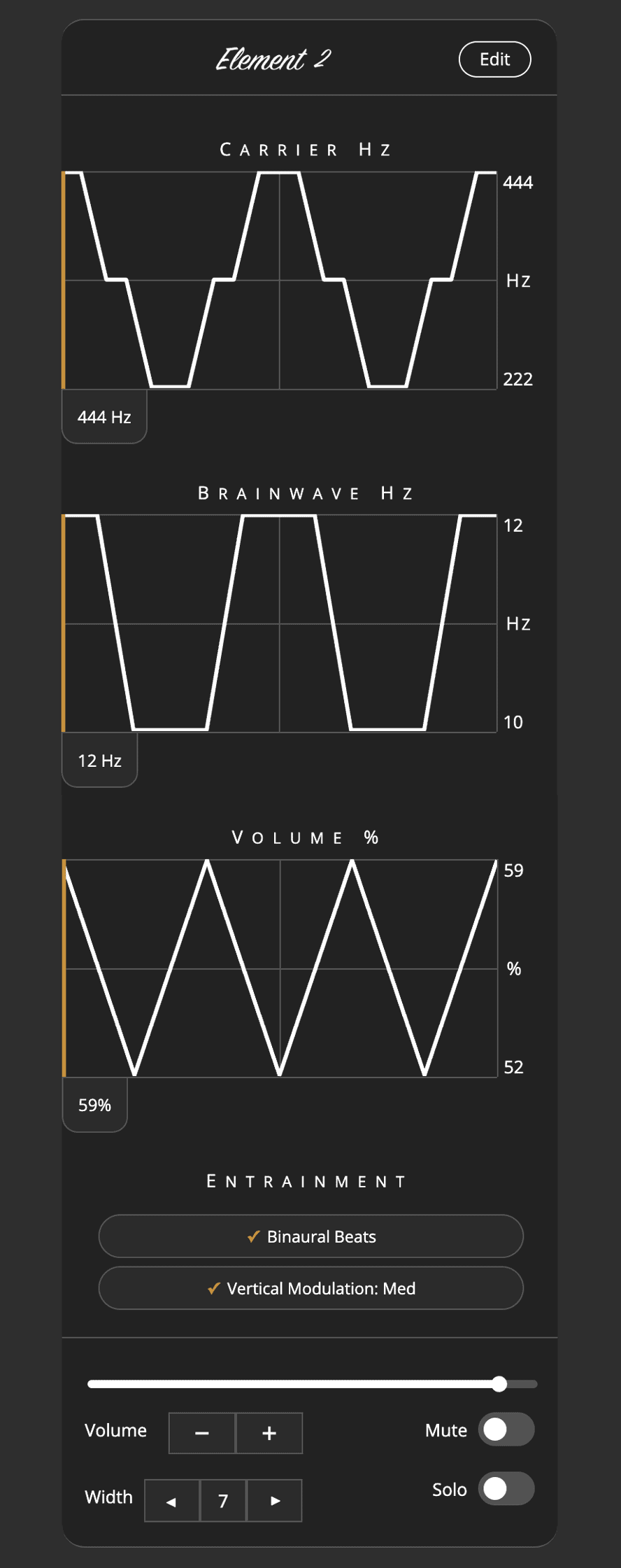
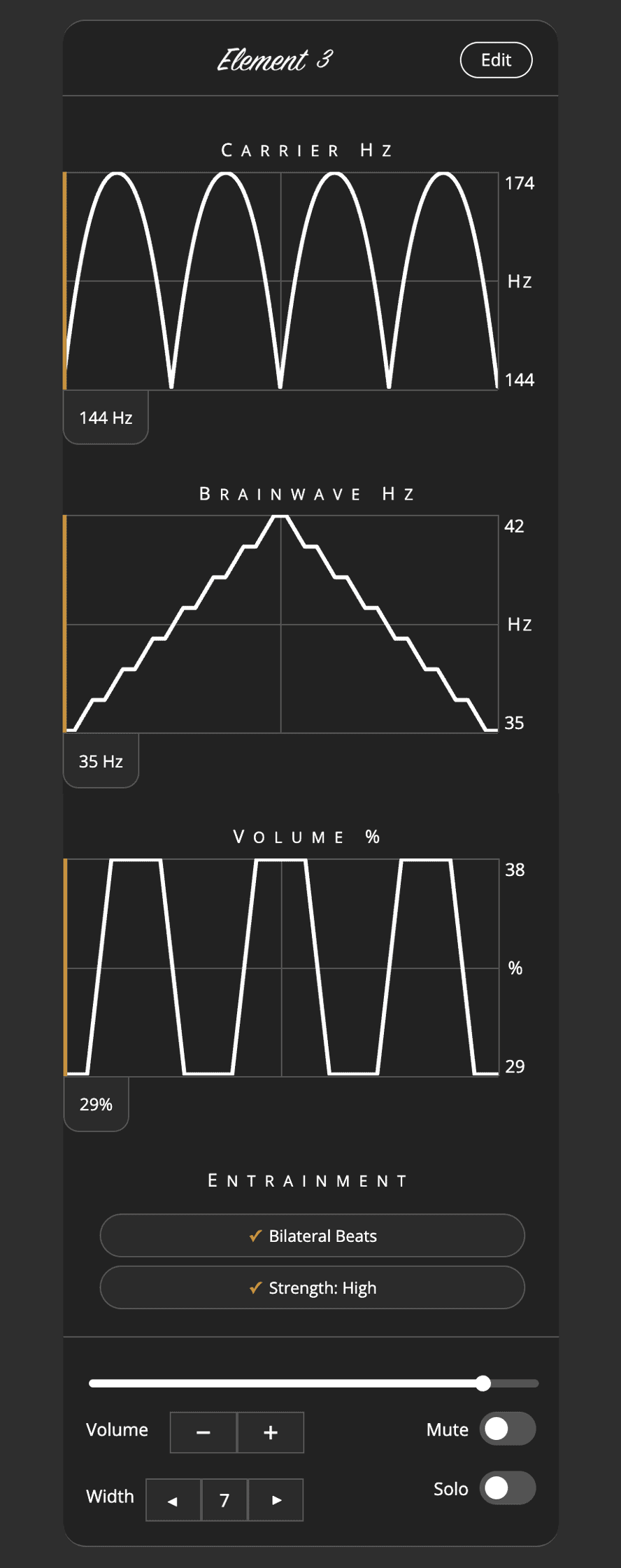
Layer 1 — Attributes:
Max Carrier: 741 Hz (Popular Solfeggio Tone)Layer 2 — Attributes:
Max Carrier: 444 Hz (Popular Tone)Layer 3 — Attributes:
Max Carrier: 174 Hz (Popular Solfeggio Tone)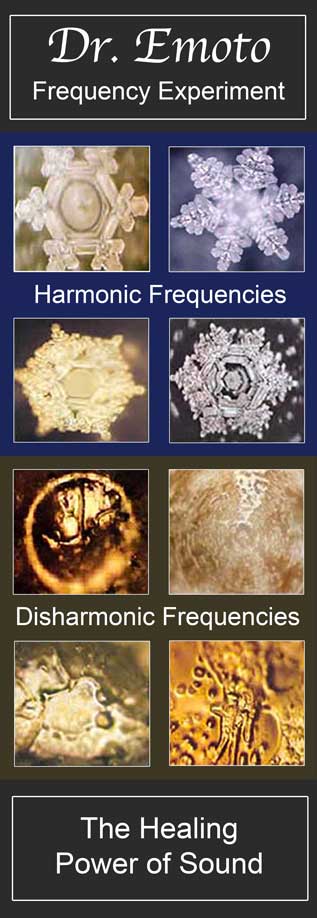
As our understanding of the world grows, certain ideas once thought fringe are now becoming mainstream. Today, the healing properties of certain sound frequencies are showing incredible promise.
Perhaps one of the most incredible experiments on the healing power of sound comes from the Japanese doctor and bestselling author, Dr. Masuro Emoto. He conducted experiments into how positive & harmonic as well as negative & disharmonic sound vibrations affect the structure of water molecules. He outlined what he found in his groundbreaking book "Messages From Water".
Surprised and amazed with his findings, he discovered that after exposing water to certain sounds (including words) during the freezing process — upon examination the frozen crystals would be either distorted & misshapen or beautiful & highly geometric.
Dr. Emoto concluded that, in effect, everything is vibration. And that certain frequencies can indeed be a form of healing energy for all forms of life. We humans are definitely impacted by this powerful phenomenon. As the years and mounting evidence build, even the most hardened skeptics are opening up to the healing power of sound and its vast potential.

Armed with this growing body of research, EquiSync's foundation is built upon the most harmonic frequencies known to science (including the Solfeggio Frequencies, the full 528 Hz & 432 Hz scales, and more). Perhaps this is why so many EquiSync users report amazing experiences with the program?
Want options? With the infinite programmability of EquiSync Element, you can do your own research (on the web) and input any frequency that you like into the program — right down to the 2nd decimal! There are no limits!
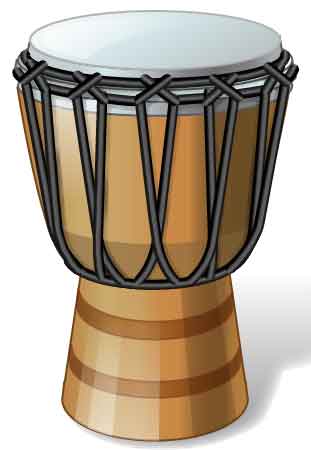
We have applied the incredible science behind drumming to a select number of EquiSync Classic & EquiSync Deepereum tracks. Quite a few users report these as their favorites! You can learn a bit more below:
The Mental & Physical Benefits of Drums Used for thousands of years, drum therapy is a time-tested method used to promote and maintain mental, physical, and spiritual wellness. In fact, scientists are becoming increasingly interested in these age-old rhythm healing techniques, with more and more academic studies verifying what our ancient ancestors have known through time.
Research has demonstrated the benefits of drum therapy for its ability to speed up physical healing, release emotional issues, boost the immune system, create a deep sense of well-being, reduce stress, lower blood pressure, and allow us to relax.

What Can Be Helped By Drum Therapy? Stress and all of its countless ugly derivatives, just to name a few: anxiety, addiction, chronic fatigue, depression, asthma, hypertension, chronic pain, mental disease, cancer, Parkinson's disease, emotional disorders, MS, heart problems, & and others. Here are a few results of scientific studies showing the benefits of drumming:
Deactivate Stress Genes. As evidenced by countless studies, stress factors into almost all disease. A landmark 2005 study published in the Medical Science Monitor found that listening to rhythmic drumming not only decreases stress, but also turns off the stress response genes believed responsible for most common diseases. Clearly, the implications for this finding are profound.
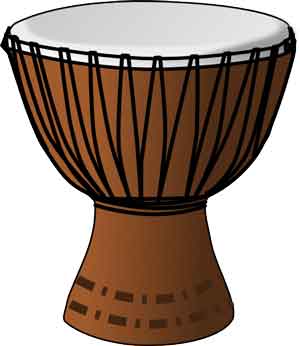
Liberate Emotional Blockages. Without a release valve, dysfunctional thoughts and feelings can create certain kinds of energetic "blockages" that grow into much bigger problems. Sound vibration can stimulate deep within each cell of the body, effectively removing said blockages and allowing any pent-up emotional dysfunction a means of release. In a key 2003 study "Drumming Out Drugs", researchers concluded that drumming can rebuild & integrate emotional health, while facilitating self expression.
Naturally Release Endorphins. A UC-Irvine researcher discovered that drum therapy can boost the body's natural painkillers and mood enhancers: endorphins and endogenous opiates. These highly beneficial neurotransmitters are best known for their ability to ease pain, lower stress, bolster the immune system, and slow aging. Rhythmic drumming does all this naturally, and when combined with meditation, can work wonders.
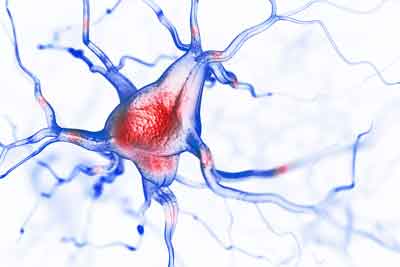
Double Alpha Brainwaves. A study by clinical psychologist Barry Quinn Ph.D found rhythmic drums to double the highly important "meditation brainwaves", producing feelings of euphoria and advanced mental states. Drum therapy can bypass the sometimes steep meditation learning curve, condensing years of practice, allowing the limitless benefits of this age-old practice to proliferate.
"If you want to find the secrets of the universe, think in terms of energy, frequency, and vibration." — Nikola Tesla
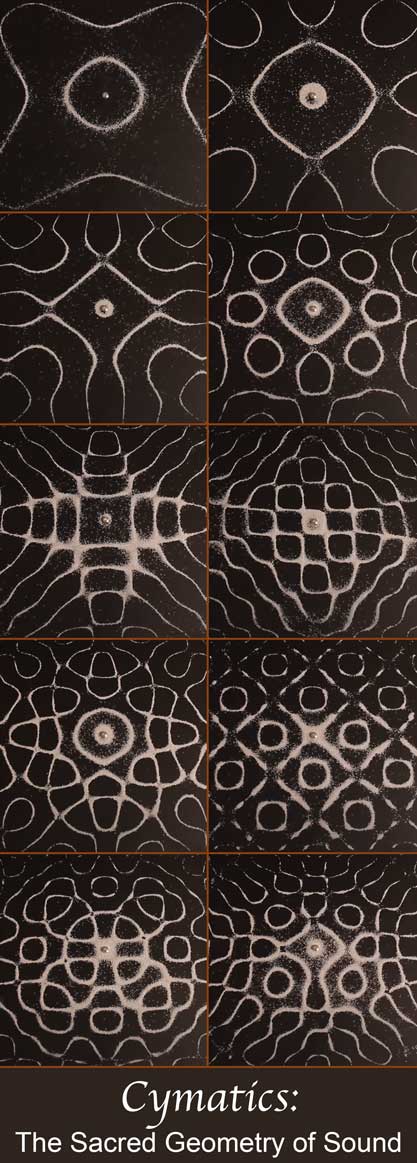
Have you seen one of the recent viral videos demonstrating the power of "cymatics?"
In case you haven't, a sand covered metal plate and soundboard are the lone ingredients in this simple yet impressive experiment.
And as the experimenter adjusts the frequency (measured in Hz) to certain levels on the audio spectrum, in response, the vibrating sand would "magically" arrange itself into near perfect geometric patterns.
It was the incredible uniqueness and beauty of the "snowflake-like" or "crystalline" patterns (at their respective frequency) that made the experiment so compelling.
While the experiment likely raises more questions than it answers, it does provide some powerfully illustrative evidence to the idea that all sound is (NOT!) created equal.
And that, just perhaps, sounds vibrated at certain frequencies can impact consciousness in very positive ways while opening the door to healing on every level.
EquiSync®: Choosing Carrier Frequencies
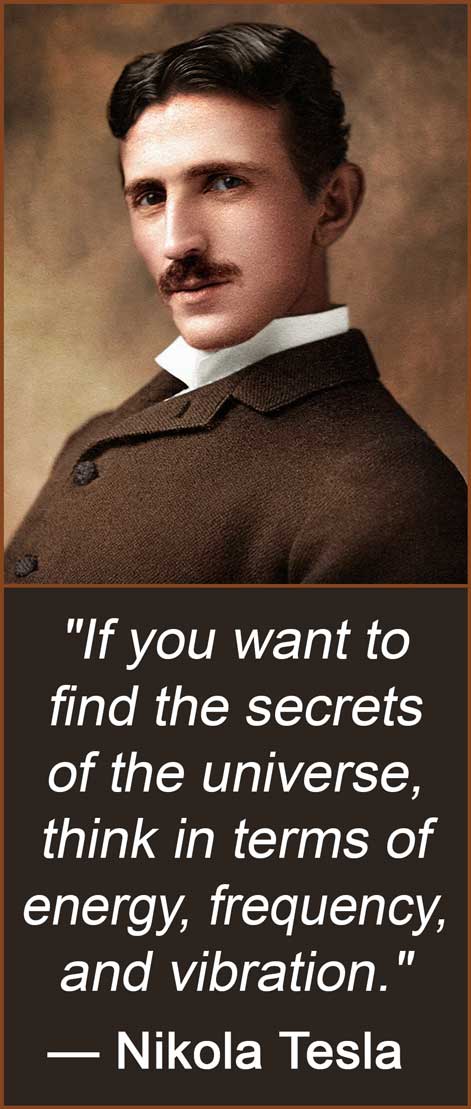
For the purpose of building a sound wave based program for deep meditation, EquiSync® contains frequencies that are most favored among the meditation community, frequencies built upon the most solid mathematical foundation, frequencies that are most well-known for their healing / therapeutic properties, frequencies that are most resonant & congruent with their respective soundscape, and frequencies with the most compelling scientific and anecdotal evidence.
EquiSync Deepereum: With a focus on the most popular tones, including the nine prominent Solfeggio Frequencies (with 528 Hz a key ingredient!), and much of the 432 Hz / 444 Hz scale. EquiSync Deepereum offers a spectrum of 29 carrier frequency profiles to choose from, with 3-5 options per soundscape.
EquiSync Element: Want more options? With the program's infinite flexibility, EquiSync Element lets you choose any frequency within the human audible range (0 Hz - 20,000 Hz) — right down to the 2nd decimal.
Generally speaking, if you don't have a preference / haven't researched the potential benefits of a particular frequency, then we recommend simply choosing a carrier profile that is well-known and / or one that sounds the most pleasing to you.
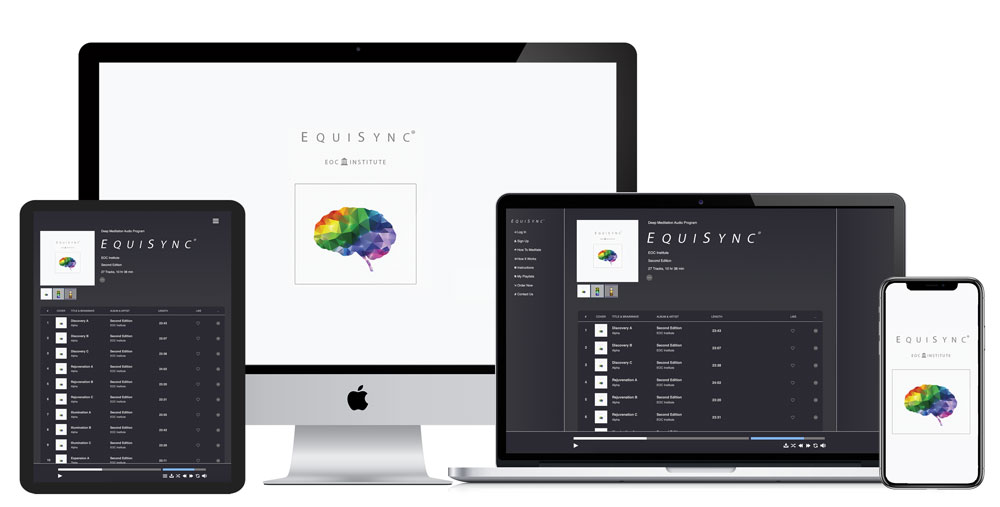


With 100,000+ extremely satisfied EquiSync® users all around the world, and product return rates close to non-existent, it’s important for everyone to see the benefits for themselves.
Upon ordering EquiSync, we’ll give you a full 60 days to try it out. If at any time during the first 60 days you feel it doesn’t live up to its promise, then no problem.
All you have to do is notify us of your intent to return at any time within the first 60 days, send the product back to us, and we will issue a 100% refund! Super easy.
To experience EquiSync for yourself risk-free, order today.

EquiSync's design is based on the 100's of studies showing the effectiveness of brainwave entrainment technology, and 1000's of studies showing the powerful benefits of meditation. If you are interested in better understanding the power of this technology and rapidly expanding field of research, then here is a very abbreviated bibliography, a very small sample of the studies out there:
Wahbeh H, Calabrese C, Zwickey H (2007). "Binaural beat technology in humans: a pilot study to assess psychologic and physiologic effects". Journal of alternative and complementary medicine(New York, N.Y.) 13 (1): 25 - 32. doi:10.1089/acm.2006.6196.
Orozco Perez, H. D., Dumas, G., & Lehmann, A. (2020) Binaural Beats through the Auditory Pathway: From Brainstem to Connectivity Patterns. eNeuro, 7(2), ENEURO.0232-19.2020. McMaster University
Le Scouarnec RP, Poirier RM, et al. (2001). "Use of binaural beat tapes for treatment of anxiety: a pilot study of tape preference and outcomes". Alternative Therapy Health Medicine. 7 (1): 58-63.
Gaynor, Md., M.L. (2002) The Healing Power of Sound. (Shambhala Publications)
Davidson, R., Kabat-Zinn J., et al. (2003) Alterations in Brain and Immune Function Produced by Mindfulness Meditation. Journal of Biobehavioral Medicine. 65:564-570.
Lazar S, Kerr C, Wasserman R, Gray J., (2005) Meditation experience is associated with increased cortical thickness. Neuroreport. 16(17): 1893 - 1897.
Vera Abeln et al (2014) Brainwave entrainment for better sleep and post-sleep state of young elite soccer players – A pilot study. European Journal of Sport Science, 14:5, 393-402, DOI: 10.1080/17461391.2013.819384
F. R. On, R. Jailani, H. Norhazman and N. M. Zaini (2013) Binaural beat effect on brainwaves based on EEG 2013 IEEE 9th International Colloquium on Signal Processing and its Applications pp. 339-343, doi: 10.1109/CSPA.2013.6530068.
A. Gupta et al (2016) Significance of alpha brainwaves in meditation examined from the study of binaural beats International Conference on Signal Processing and Communication (ICSC) pp. 484-489, doi: 10.1109 /ICSPCom.2016.7980629.
Bernhard Hommel, Roberta Sellaro, Rico Fischer, Saskia Borg and Lorenza S. Colzato (2016) High-Frequency Binaural Beats Increase Cognitive Flexibility: Evidence from Dual-Task Crosstalk Front. Psychol., 24 August 2016 10.3389/fpsyg.2016.01287
Zampi, Donna D. et al (2015) Efficacy of Theta-Binaural Beats for the Treatment of Chronic Pain Northcentral University. ProQuest Dissertations Publishing 3670283
Tirdad Seifi et al (2017) Cumulative effects of theta binaural beats on brain power and functional connectivity Biomedical Signal Processing and Control Volume 42, April 2018, Pages 242-252
Beauchene C, Abaid N, Moran R, Diana RA, Leonessa A (2016) The Effect of Binaural Beats on Visuospatial Working Memory and Cortical Connectivity PLOS ONE 11(11): e0166630. 10.1371/journal.pone.0166630
Karino S., Yumoto M., et al. (2006) Neuromagnetic Responses to Binaural Beat in Human Cerebral Cortex. Journal of Neurophysiology. 96. 1927-38.
Reddi V., (2002) Effect of Binaural Beat Stimulation on Pain and Mood in Individuals Reporting Chronic Low Back Pain. Moore Health Science Library, University of Virginia.
Cahn BR, Polich J., (2006) Meditation states and traits: EEG, ERP, and neuroimaging studies. Psychological Bulletin. Vol 132(2) 180-211.
Barnhofer, T, Chittka T, et al., (2009) State Effects of Two Forms of Meditation on Prefrontal EEG Asymmetry in Previously Depressed Individuals. Mindfulness. Vol. 1-1, 21-27.
Brefczynski-Lewis J, Lutz A,. (2007) Neural correlates of attentional expertise in long-term meditation practitioners. Proceedings of the National Academy of the Sciences.vol. 104-27.
Oman D, Shapiro S, et al., (2008). Meditation Lowers Stress and Supports Forgiveness Among College Students: A Randomized Controlled Trial. Journal of American College Health, Volume 56, Number 5, 569 - 578
Moore A., Malinowski P. (2009) Meditation, mindfulness and cognitive flexibility. Consciousness and Cognition, 18 (1), pp. 176-186.
Chuter E., Allan M., Laws D. (2007) A pilot study comparing reduction of anxiety by binaural beat audio and patient-selected music in the pre-operative period. Anaesthesia. 62, 3 310.
Stevens L et al., (2003) Binaural beat induced theta EEG activity and hypnotic susceptibility: contradictory results and technical considerations. The American Journal Clinical Hypnosis45(4):295-309.
Brady B., (2000) Binaural-beat induced theta EEG activity and hypnotic susceptibility. American Journal of Clinical Hypnosis.
Klepp S., (2005) Effects of Binaural-beat Stimulation on Recovery Following Traumatic Brain Injury: A Pilot Study. Subtle Energies and Energy Medicine.
Kennerly, R., (2004) QEEG analysis of binaural beat audio entrainment: A pilot study. Journal of Neurotherapy
Lo P, Leu J, Quantification of pseudo-periodicity of alpha rhythm in meditation EEG. Journal of Medical and Biological Engineering, Vol 25, No 1.
Takahashi T, Murata T,et al., (2005) Changes in EEG and autonomic nervous activity during meditation and their association with personality traits. International Journal of Psychophysiology. Vol.55-2, 199-207.
Lagopoulos J, Xu J, Rasmussen I, et al., (2009) Increased theta and alpha EEG activity during nondirective meditation. The Journal of Alternative and Complementary Medicine.15(11): 1187-1192.
Aftanas L., Golosheykin S., (2005) Impact of regular meditation practice on eeg activity at rest and during evoked negative emotions. International Journal of Neuroscience.
Chiesa A., Serretti A., (2010) A systematic review of neurobiological and clinical features of mindfulness meditations. Psychological Medicine. 40: 1239-1252.
Aftanas L., Golocheikine S., (2001) Human anterior and frontal midline theta and lower alpha reflect emotionally positive state and internalized attention: high-resolution EEG investigation of meditation.Neuroscience Letters. Vol. 310- 1, 7 57-60.
Lehmann d., Faber P.L., Achermann P., et al., (2001) Brain sources of EEG gamma frequency during volitionally meditation-induced, altered states of consciousness, and experience of the self. Psychiatry Research & Neuroimaging. Vol.108-2, 111-121.
Baijal S., Narayanan S., (2010) Theta activity and meditative states: spectral changes during concentrative meditation. Cognitive Processing. Vol.11-1, 31-38.
Barnhofer, T., Duggan, D., Crane, C., et al., (2007) Effects of meditation on frontal [alpha]-asymmetry in previously suicidal individuals. Neuroreport. Vol.18, Issue 7, 709-712.
Fell J., Axmacher N., Haupt S., (2010) From alpha to gamma: Electrophysiological correlates of meditation-related states of consciousness. Medical Hypotheses. Vol.75, Issue 2, P.218-224.
Tang Y., Ma Y., Wang J., Yaxin F., et al., (2007) Short-term meditation training improves attention and self-regulation. Proceedings of the National Academy of the Sciences.vol. 104-43.
Lutz A, Brefczynski-Lewis J, Johnstone T, Davidson R., (2008) Regulation of the neural circuitry of emotion by compassion meditation: effects of meditative expertise. PLOS One.3(3): e1897. doi:10.1371/journal.pone.0001897
S Jain, SL Shapiro, et al., (2007) A randomized controlled trial of mindfulness meditation versus relaxation training: effects on distress, positive states of mind, rumination, and distraction. Annals of Behavioral MedicineVolume 33, Number 1, 11-21
Farb N., Segal., et al., (2007) Attending to the present: mindfulness meditation reveals distinct neural modes of self-reference. Social Cognitive & Affective Neuroscience.Volume 2, Issue 4. 313-322.
G Pagnoni, M Cekic, (2007) Age effects on gray matter volume and attentional performance in Zen meditation. - Neurobiology of aging. 28-10 1623-1627.
Zautra A., Davis M., et al., (2008) Comparison of Cognitive Behavioral and Mindfulness Meditation Interventions on Adaptation to Rheumatoid Arthritis for Patients With and Without History of Recurrent Depression.Journal of Consulting and Clinical Psychology Volume 76, Issue 3, June 2008, Pages 408-421
SE Sephton, P Salmon, I Weissbecker, C, (2007). Mindfulness meditation alleviates depressive symptoms in women with fibromyalgia: results of a randomized clinical trial. Arthritis Care & ResearchVolume 57, Issue 1, pages 77 - 85.
Bowen S., Witkiewitz K., et al., (2006). Mindfulness Meditation and Substance Use in an Incarcerated Population. sychology of Habitual Behaviors. American Psychological Association2006, Vol. 20, No. 3, 343 - 347.
Zylowska L., Ackerman D., (2007). Mindfulness Meditation Training in Adults and Adolescents With ADHD: A Feasibility Study. Journal of Attention Disorders.
Carter, Olivia L. Presti, D., et al., (2005) Meditation alters perceptual rivalry in Tibetan Buddhist monks. Current Biology, 15 (11).
Kosycki D., Benger M., et al., (2007). Randomized trial of a meditation-based stress reduction program and cognitive behavior therapy in generalized social anxiety disorder. Behaviour Research and Therapy. Vol. 45-10, 2518-2526.
S Settapat, M Ohkura, (2008) An Alpha-wave-based binaural beat sound control system using fuzzy logic and autoregressive forecasting model. SICE Annual Conference. 20-22, 109-114
Tang Y, Yinghua M., et al., (2009). Central and autonomic nervous system interaction is altered by short-term meditation. PNAS. 106-22 8865-8870.
Davidson, R., Lutz, A., (2008). Buddha's Brain: Neuroplasticity and Meditation [In the Spotlight]. Signal Processing Magazine. 25-1 176-174
Epel E., et al., (2009). Can Meditation Slow Rate of Cellular Aging? Cognitive Stress, Mindfulness, and Telomeres. Annals of the New York Academy of Sciences. Volume 1172, 34�53
Pace, T., Negi L., (2009). Effect of compassion meditation on neuroendocrine, innate immune and behavioral responses to psychosocial stress. PsychoneuroendocrinologyVolume 34-1. 87-98.
Tavee and Stone. (2010) Healing the mind: Meditation and multiple sclerosis. Neurology. 75: 1130-1131
Wenk S., (2005). Meditation can reduce habitual responding. Alternative Therapy Health Medicine. 11(2): 42-58
Empson, J. (1986). Human Brainwaves: The Psychological Significance of the Electroencephalogram. (London: The Macmillan Press Ltd.)
Etnier, J. L., Whitwer, S. S., Landers, D. M., Petruzzello, S. J., & Salazar, H. M. (1996) Changes in electroencephalographic activity associated with learning a novel motor task. Research Quarterly for Exercise and Sport. 67(3), 272-287.
Klinger, E., Gregoire, K. C., & Barta, S. G. (1973) Physiological correlates of mental activity: Eye movements, alpha, and heart rate during imaging, suppression, concentration, search, and choice. Psychophysiology, 10, 471-477.
Anand, B. K., Chhina, G. S., & Singh, B. (1961). Some aspects of electroencephalographic studies in yogis. Electroencephalography and Clinical Neurophysiology, 13, 452-456.
Davidson, R. J., Schwartz, G. E., & Shapiro, D. (1980). Consciousness and self-regulation: Advances in research. (Vol. 3). New York: Plenum Press.
Luria, A. R. (1970). The functional organization of the brain. In Recent Progress in Perception. (San Francisco: W. H. Freeman and Company).
Marsh, J.T., Brown, W.S., & Smith, J.C. (1975). Far-field recorded frequency-following responses: Correlates of low pitch auditory perception in humans. Electroencephalography and Clinical Neurophysiology, 38, pp. 113-119.
Anch, A.M., Browman, C.P., Mitler, M.M. & Walsh, J.K. (1988). Sleep: A Scientific Perspective. (Englewood Cliffs: Prentice Hall).
Ashley-Farrand, T. (1999). Healing Mantras: Using Sound Affirmations for Personal Power, Creativity and Healing. (Ballantine Wellspring)
Bagchi, B. K., & Wenger, M. A. (1958). Simultaneous EEG and other recordings during some yogic practices. Electroencephalography and Clinical Neurophysiology, 10, 193.
Banquet, J. P. (1972). EEG and meditation. Electroencephalography and Clinical Neurophysiology, 33, 454.
Carter, G. (1993). Healing Myself. (Norfolk: Hampton Roads Publishing Company).
Coulson, Louis T. & Strickland, Alison (1990). Journeys Into Creative Problem Solving: Inviting Insights and Inventing Ideas Through Imagery. Applied Creative Learning Systems Inc., Seminole, FL.
Spoormaker VI, van den Bout J (2006). "Lucid dreaming treatment for nightmares: a pilot study". Psychotherapy and psychosomatics 75 (6): 389 - 94. doi:10.1159/000095446.
Saxby E, Peniston EG (1995). "Alpha-theta brainwave neurofeedback training: an effective treatment for male and female alcoholics with depressive symptoms". Journal of clinical psychology 51 (5): 685 - 93. doi:10.1002/1097-4679(199509)51:5 <685::AID-JCLP2270510514>3.0.CO;2-K.
Watson CG, Herder J, Passini FT (1978). "Alpha biofeedback therapy in alcoholics: an 18-month follow-up". Journal of clinical psychology 34 (3): 765ï - 9. doi:10.1002/1097-4679(197807)34:3 <765::AID-JCLP2270340339>3.0.CO;2-5.
Loftus EF, Davis D (2006). "Recovered memories". Annual review of clinical psychology 2: 469 - 98. doi:10.1146/annurev.clinpsy.2.022305.095315.
Cott, A., Pavloski, R. P., & Goldman, J. A. (1981). Cortical alpha rhythm, biofeedback, and the determinants of subjective state. Journal of Experimental Psychology: General, 110, 381-397.
Beaulieu, J. (1995). Music and Sound in the Healing Arts. (Barrytown Station Hill Press)
Beck, A. T. (1987). Beck Depression Inventory Manual. New York: Harcourt, Brace, Jovanovich, Inc.
Beisteiner R, Altenmuller E, Lang W, Lindinger G, Deecke L. (1994) Measurement of brain potentials with EEG. European Journal of Cognitive Psychology. 6:311-27.
Taylor P (2005). "Human auditory steady state responses to binaural and monaural beats". Clinical neurophysiology : official journal of the International Federation of Clinical Neurophysiology 116 (3): 658 - 68. doi:10.1016/j.clinph.2004.09.014. PMID 15721080.
Rogers LJ, Walter DO (1981). "Methods for finding single generators, with application to auditory driving of the human EEG by complex stimuli". J. Neurosci. Methods 4 (3): 257 - 65. doi:10.1016/0165-0270(81)90037-6.
Gottselig JM, Brandeis D, Hofer-Tinguely G, Borby AA, Achermann P (2004). "Human central auditory plasticity associated with tone sequence learning". Learn. Mem. 11 (2): 162 - 71. doi:10.1101/lm.63304.
Peniston EG, Kulkosky PJ (1989). "Alpha-theta brainwave training and beta-endorphin levels in alcoholics". Alcohol. Clin. Exp. Res. 13 (2): 271 - 9. doi:10.1111/j.1530-0277.1989.tb00325.x.
Boynton, T. (2001) Applied Research Using Alpha/Theta Training For Enhancing Creativity and Well-Being. Journal of Neurotherapy, 5.
Lane JD, Kasian SJ, Owens JE, Marsh GR (1998). "Binaural auditory beats affect vigilance performance and mood". Physiol. Behav. 63 (2): 249 - 52.
Beatty J, Greenberg A, Deibler WP, O'Hanlon JF (1974). "Operant control of occipital theta rhythm affects performance in a radar monitoring task". Science 183 (127): 871 - 3. doi:10.1126/science.183.4127.871.
Hutchison, Michael M. (1986). Megabrain: new tools and techniques for brain growth and mind expansion. New York: W. Morrow. ISBN 0-688-04880-3.
Banquet, J. P. (1973). Spectral analysis of the EEG in meditation. Electroencephalography and Clinical Neurophysiology, 35, 143-151.
Rosenzweig, M. R. (1961) Auditory localization. In Perception: Mechanisms and Models. (San Francisco: W. H. Freeman and Company).
Rossi, E. L. (1986) Altered states of consciousness in everyday life: The ultradian rhythms. In B. B. Wolman & M. Ullman (Eds.), Handbook of States of Consciousness, pp. 97-133. (New York: Van Nostrand Reinhold Company).
Russell, R., ed. (1993) Using the whole brain. Hampton Roads Publishing Co.: Norfolk, VA.
Sabourin, M. E., Cutcomb, S. E., Crawford, H. J., & Pribram, K. (1990). EEG correlates of hypnotic susceptibility and hypnotic trance: Spectral analysis and coherence. International Journal of Psychophysiology, 10, pp. 125-142.
Martindale, C. (1975) What Makes Creative People Different. Psychology Today. July, 44-50.
Martindale, C., Armstrong, J. (1974) The relationship of creativity to cortical activation and its operant control. Journal of Genetic Psychology, 124, 311-320.
Sanders, G. O. (1989). A cognitive behavioral program in federal prisons. Unpublished manuscript. Leavenworth, Ks.
Basar, E. (1980) EEG Brain Dynamics. Elsevier, Amsterdam.
Brown, B. B. (1970). Recognition of aspects of consciousness through association with EEG alpha activity represented by a light signal. Psychophysiology, 6, 442-452.
Budzynski, T. H. (1986). Clinical applications of non-drug-induced states. In B. B. Wolman & M. Ullman (Eds.), Handbook of States of Consciousness, pp. 428-460. (New York: Van Nostrand Reinhold Company).
Cade, C. M., & Coxhead, N. (1979). The Awakened Mind. Longmead, Great Britain: Element Books.
Martindale, C. (1978) Creativity, consciousness, and cortical arousal. Journal of Altered States of Consciousness, 3, 69-87.
Martindale, C. & Greenough, J. (1973) The Differential Effect of Increased Arousal on Creative and Intellectual Performance. The Journal of Genetic Psychology. 123, 329-335.
Pfurtscheller, G., and Andrew, C. (1999) Event-Related changes of band power and coherence: methodology and interpretation. Journal of Clinical Neurophysiology. 16(6), 512-519
Ray, G. C, Kaplan, A.Y. (1994) Transcendent Signal and its Possible Signature on Electroencephalogram. Journal of the Institution of Engineers India, Vol. 74, March, 22-31.
Razoumnikova, O.M. (1999) Reflection of Convergent and Divergent Thinking in Topographic EEG Organization. Institute of Physiology, Novosibirsk, Russia
Martindale, C. & Hasenfus, N. (1978) EEG Differences as a Function of Creativity, Stage of the Creative Process, and Effort to be Original. Biological Psychology. 6, 157-167.
Martindale, C., Mines, D. (1975) Creativity and cortical activation during creative, intellectual and EEG feedback tasks. Biological Psychology. 3, 91-100.
Henry, J.P. (1992). Instincts, Archetypes and Symbols: An Approach to the Physiology of Religious Experience. (Dayton: College Press).
Hink, R. F., Kodera, K., Yamada, O., Kaga, K., & Suzuki, J. (1980). Binaural interaction of a beating frequency following response. Audiology, 19, pp. 36-43.
Fischer, R. (1971). A cartography of ecstatic and meditative states. Science, 174 (4012), pp. 897-904.
Gaynor, Md., M.L. (1999) Sounds of Healing. (Broadway Books)
Mikuriya, T. H. (1979) Interhemispheric alpha rhythm synchronization: A voluntary altered state of consciousness. American Journal of Clinical Biofeedback, 2, 22-25.
Molle, M., Marshall, L., Wolf, B., Horst, L., & Born, J. (1999). EEG complexity and performance measures of creative thinking. Psychophysiology. 36
Basar, E. (ed.) (1988) Dynamics of Sensory and Cognitive Processing by the Brain. Springer Verlag, Berlin, Germany.
Hirai, T. (1960) Electroencephalograpic Study of Zen Meditation. Psychiatry. Neurology. 62, 76-105.
Hutchison, M. (1986). Megabrain: New tools and techniques for brain growth and mind expansion. (Beech Tree Books). pp. 261-281.
Hunt, V. V. (1995). Infinite Mind: The Science of Human Vibrations. (Malibu: Malibu Publishing Company).
Jackson, G. M., & Eberly, D. A. (1982) Facilitation of performance on an arithmetic task as a result of the application of a biofeedback procedure to suppress alpha wave activity. Biofeedback and Self-Regulation. 7, 211-221.
Jevning, R., Wallace, R. K., & Beidenbach, M. (1992). The physiology of meditation: A review. A wakeful hypnometabolic integrated response. Neuroscience and Behavioral Reviews, 16, pp. 415-424.
Jovanov, E., Rakovi, D., Car, M. (1995) Evaluation of state of consciousness using software support for monitoring spatio-temporal EEG changes. ISCA Intl. Conference on Computer Applications in Engineering and Medicine.
Martindale, C., Mines, D., Mitchell, L., Covello, E. (1984) EEG Alpha Asymmetry and Creativity. Personality & Individual Differences. 5(1), 77-86.
Matarazzo, J. D. (1972). Wechsler's measurement and appraisal of adult intelligence. 5th ed. Baltimore: Williams & Wilkins.
Evans, F. J. (1972). Hypnosis and sleep: Techniques for exploring cognitive acitvity during sleep. In E. Fromm & R. E. Shor (Eds.), Hypnosis: Research developments and perspectives. Chicago: Aldine- Atherton.
Bear. (1977). Efficacy of alpha biofeedback training in elevating mood. Journal of Consulting and Clinical Psychology, 45, 334.
Beatty, J.; Greenberg, A.; Deibler, W. P.; O' Hanlon, J. F. (1974). Operant control of occipital theta rhythm affects performance in a radar monitoring task. Science 183:871-873.
Degood, D. E., & Valle, R. S. (1975). A state-trait analysis of alpha density and personality variables in a normal population. Journal of Clinical Psychology, 31, 624-631.
Oster, G. (1973) Auditory beats in the brain. Scientific American, 229, pp. 94-102.
Penfield, W. (1975) The Mystery of the Mind. (Princeton: Princeton University Press).
Peniston, E. G., and Kulkosky, P. J. (1989) Alpha-theta brainwave training and beta-endorphin levels in alcoholics. Alcoholism: Clinical and Experimental Research. 13:271-79.
Gerken, G. M., Moushegian, G., Stillman, R. D., & Rupert, A. L. (1975). Human frequency-following responses to monaural and binaural stumuli. Electroencephalography and Clinical Neurophysiology, 38, 379-386.
Gevins, A., Smith, M. E., McEvoy, L., & Yu, D. (1997) High-resolution EEG mapping of cortical activation related to working memory: Effects of task difficulty, type of processing, and practice. Cerebral Cortex. 7(4), 374-385.
Giannitrapani, D. (1985). The electrophysiology of intellectual functions. New York: Karger.
Delmonte, M. M. (1984). Electrocortical activity and related phenomena associated with meditation practice: A literature review. International Journal of Neuroscience, 24, pp. 217-231.
Dewhurst-Maddock, O. (1993). The Book of Sound Therapy. (Fireside Publishers)
Menning H, Roberts LE, Pantev C (2000). "Plastic changes in the auditory cortex induced by intensive frequency discrimination training". Neuroreport 11 (4): 817 - 22. doi:10.1097/00001756-200003200-00032.
Monroe, R. A. (1985) Far journeys. New York: Doubleday.
Kasamatsu, A., & Hirai, T. (1969) An electroencephalographic study on the zen meditation. In Tart (Ed.), Altered states of consciousness (pp. 501-514).
Kennerly, R. C. (1994). An empirical investigation into the effect of beta frequency binaural beat audio signals on four measures of human memory. (Department of Psychology, West Georgia College, Carrolton, Georgia).
McMoneagle, J. (1993). Mind Trek. (Norfolk: Hampton Roads Publishing Company).
McNair, D. M., Lorr, M., Droppleman, L. F. (1992) EdITS manual for the profile of mood states. San Diego: EdITS;1992.
Petsche, H. (1996) Approaches to verbal, visual and musical creativity by EEG coherence analysis. International Journal of Psychophysiology. 24(1-2), 145-59.
Morris, S. (1991) Facilitation of learning. In Neurodevelopmental strategies for managing communication disorders in children with severe motor dysfunction. Austin, Tex.: Pro-ed.
Green, E. E. & Green, A. M. (1986). Biofeedback and states of consciousness. In B. B. Wolman & M. Ullman (Eds.), Handbook of States of Consciousness, pp. 553-589. (New York: Van Nostrand Reinhold Company).
Green, E. E., Green, A. M., & Walters, E. D. (1970). Voluntary control of internal states: psychological and physiological. Journal of Transpersonal Psychology, 2, 1-25.
Guilfoyle, G. & Carbone, D. (1996). The facilitation of attention utilizing therapeutic sounds. Presented at the New York State Association of Day Service Providers Symposium, October 18, 1996, Albany, New York.
Hassler M. (1990) Functional cerebral asymmetries and cognitive abilities in musicians, painters, and controls. Cognitive Brain Research. 13:1-17.
Kamiya, J. (1969) Operant control of the EEG alpha rhythm and some of its reported effects on consciousness. In Tart (Ed.), Altered states of consciousness (pp. 519-529).
Petsche, H., Kaplan, S., von Stein, A., and Filz, O. (1997) The possible meaning of the upper and lower alpha frequency ranges for cognitive and creative tasks. International Journal of Psychophysiology. 26, 77-97.
Sanders, G. O. (1995). Personal communication. Mount Edgecumbe Hospital, Sitka AK.
Satyanarayana, M., Rajeswari, K.R., Rani, N.J., Krishna, C.S., Rao, P.V. (1992) Effect of Santhi Kriya on certain psychophysiological parameters: a preliminary study. Indian Journal of Physiological Pharmacology, 36(2), pp. 88-92, 1992.
Schwartz, G. E., & Shapiro, D. (Eds.). (1976). Consciousness and self-regulation: Advances in research. (Vol. 1). New York: Plenum Press.
Shannahoff-Khalsa, D. (1991). Lateralized rhythms of the central and autonomic nervous systems. International Journal of Psychophysiology, 11, pp. 225-251.
Singer, W. (1993) Synchronization of cortical activity and its putative role in information processing and learning. Annual Review Physiology, 55, 349-374.
Smith, J.C., Marsh, J.T., Greenberg, S., & Brown, W.S. (1978). Human auditory frequency-following responses to a missing fundamental. Science, 201, pp. 639-641.
Steriade, M., McCormick, D. A., & Sejnowski, T. J. (1993). Thalamocortical oscillations in the sleeping and aroused brain. Science, 262, 679-685.
Swann, R., Bosanko, S., Cohen, R., Midgley, R., & Seed, K.M. (1982). The Brain - A User's Manual. p. 92. (New York: G. P. Putnam's Sons).
Tart, C. T. (1969). States of Consciousness. (New York: E. P. Dutton & Company).
Tice, L. E. & Steinberg, A. (1989). A Better World, A Better You. pp. 57-62. (New Jersey: Prentice Hall).
Turner, J. W. & Fine, T. H. (1985) Effects of restricted environmental stimulation therapy (REST) on self-control of heart rate in Health and Clinical Psychology pp. 477-490. (Elsevier Science Publishers B.V. North-Holland).
Waldkoetter, R. O. & Sanders, G. O. (1997). Auditory brain wave stimulation in treating alcoholic depression. Perceptual and Motor Skills, 84, p. 226.
Waldkoetter, R. O., and Vandivier, P. L. (1992). Auditory guidance in officer level training. Paper presented at the 34th Annual Conference of the Military Testing Association, San Diego CA.
Waldkoetter, R. O. (1983). The use of audio-guided stress reduction to enhance performance. Paper presented at the 25th Annual Conference of the Military Testing Association, Gulf Shores AL.
Wallace, R.K., Benson, H. (1972) The Physiology of Meditation, Scientific American. 226:84.
West, M. A. (1980). Meditation and the EEG. Psychological Medicine, 10, pp. 369-375.
Webb, W. B., & Dube, M. G. (1981). Temporal characteristics of sleep. In J. Aschoff (Ed.), Handbook of Behavioral Neurobiology, pp. 510-517. (New York: Plenum Press).
Zaidel, E. (1985). Academic implications of dual-brain theory. In The Dual Brain. (New York: The Guilford Press).
Zhang, J.Z, Zhao, J., He, Q.N., (1988) EEG findings during special psychical state (Qi Gong State) by means of comressed spectral array and topographic mapping, Computers in Biology and Medicine. Vol. 18, 6:455-463.
Zigler, E. F., and Finn-Stevenson, M. (1987). Children: Development and social issues. Lexington, Mass.: D.C. Heath and Company.
Oster G (1973). "Auditory beats in the brain". Sci. Am. 229 (4): 94 - 102.
Hutchison, Michael M. (1986). Megabrain: new tools and techniques for brain growth and mind expansion. New York: W. Morrow.
Spitzer MW, Semple MN (1998). "Transformation of binaural response properties in the ascending auditory pathway: influence of time-varying interaural phase disparity". J. Neurophysiolgy. 80 (6): 3062 - 76. PMID 9862906.
Thaut MH (2003). "Neural basis of rhythmic timing networks in the human brain". Ann. N. Y. Acad. Sci. 999: 364 - 73. doi:10.1196/annals.1284.044.
Barr DF, Mullin TA, Herbert PS. (1977). "Application of binaural beat phenomenon with aphasic patients". Arch Otolaryngol. 103 (4): 192-194.
Gerken GM, Moushegian G, Stillman RD, Rupert AL (1975). "Human frequency-following responses to monaural and binaural stimuli". Electroencephalography and clinical neurophysiology 38 (4): 379 - 86.
Dobie RA, Norton SJ (1980). "Binaural interaction in human auditory evoked potentials". Electroencephalography and clinical neurophysiology 49 (3-4): 303 - 13. doi:10.1016/0013-4694(80)90224-2.
Moushegian G, Rupert AL, Stillman RD (1978). "Evaluation of frequency-following potentials in man: masking and clinical studies". Electroencephalography and clinical neurophysiology 45 (6): 711 - 8.
Smith JC, Marsh JT, Greenberg S, Brown WS (1978). "Human auditory frequency-following responses to a missing fundamental". Science 201 (4356): 639 - 41. doi:10.1126/science.675250.
Smith JC, Marsh JT, Brown WS (1975). "Far-field recorded frequency-following responses: evidence for the locus of brainstem sources". Electroencephalography and clinical neurophysiology 39 (5): 465 - 72.
Yamada O, Yamane H, Kodera K (1977). "Simultaneous recordings of the brain stem response and the frequency-following response to low-frequency tone". Electroencephalography and clinical neurophysiology 43 (3): 362 - 70.
Cvetkovic D, Simpson D, Cosic I (2006). "Influence of sinusoidally modulated visual stimuli at extremely low frequency range on the human EEG activity". Conference proceedings : ... Annual International Conference of the IEEE Engineering in Medicine and Biology Society. IEEE Engineering in Medicine and Biology Society. Conference 1: 1311 - 4. doi:10.1109
Ogilvie RD, Hunt HT, Tyson PD, Lucescu ML, Jeakins DB (1982). "Lucid dreaming and alpha activity: a preliminary report". Perceptual and motor skills 55 (3 Pt 1): 795 - 808. PMID 7162915.
Berry SD, Seager MA (2001). "Hippocampal theta oscillations and classical conditioning". Neurobiol Learn Mem 76 (3): 298 - 313. doi:10.1006/nlme.2001.4025.
Seager MA, Johnson LD, Chabot ES, Asaka Y, Berry SD (2002). "Oscillatory brain states and learning: Impact of hippocampal theta-contingent training". Proc. Natl. Acad. Sci. U.S.A. 99 (3): 1616 - 20. doi:10.1073/pnas.032662099.
Griffin AL, Asaka Y, Darling RD, Berry SD (2004). "Theta-contingent trial presentation accelerates learning rate and enhances hippocampal plasticity during trace eyeblink conditioning". Behav. Neurosci. 118 (2): 403 - 11. doi:10.1037/0735-7044.118.2.403.
Vernon D, Egner T, Cooper N. "The effect of training distinct neurofeedback protocols on aspects of cognitive performance". International journal of psychophysiology, et al (2003). " : official journal of the International Organization of Psychophysiology 47 (1): 75 - 85.
Understanding How EquiSync® Works
Your brain has nerve cells that fire electrical signals day and night, forming distinctive arrangements called brainwave patterns. These highly unique patterns are closely connected to your thoughts, emotions, moods, biological chemistry, everything you do, and really, everything that you are.
Because EquiSync® sound technology guides you into different mind states (and various states of meditation) via brainwave entrainment, it's helpful to understand the different frequencies and how they contribute to your state of consciousness.
Since most of us spend our days in the beta state, EquiSync excludes beta brainwaves, and entrains only those responsible for the most beneficial states of consciousness: alpha, theta, and delta. The two charts on this page illustrate the basic benefits of each brainwave state as well as the basic targeting of the EquiSync programs 1, 2, & 3.











